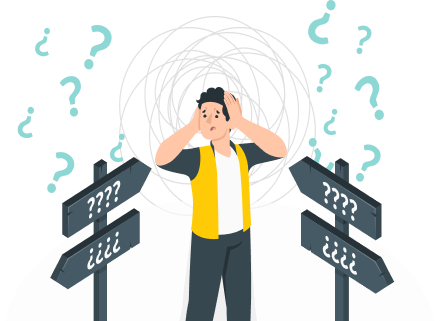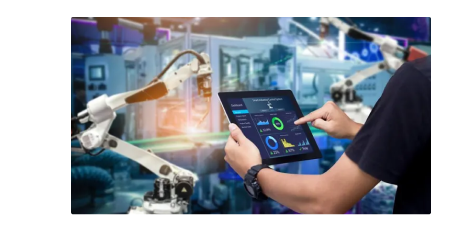#TakeCharge with #Aimshala
How make a career in Virtual Reality Designer
A career as a Virtual Reality Designer in the healthcare industry offers a unique opportunity to create immersive experiences that enhance medical training, patient treatment, and rehabilitation. To embark on this career path, individuals typically need a strong academic background in design, computer science, or a related field. Pursuing a bachelor's degree is essential, followed by potential specialization through master's programs or certifications in virtual reality and related technologies. Gaining practical experience through internships, projects, or collaborations with healthcare professionals enhances employability. Networking with industry professionals and staying updated with the latest advancements in virtual reality technology are also crucial. With a blend of education, experience, and passion for technology and healthcare, one can build a rewarding career dedicated to improving healthcare delivery through virtual reality.
Career in Virtual Reality Designer
What are the roles and responsibilities in Virtual Reality Designer?
- Designing VR Experiences : Virtual Reality Designers create immersive simulations for medical training, patient education, and therapeutic applications.
- Programming : They write code to develop interactive elements of virtual reality applications, ensuring functionality and user engagement.
- User Testing : Virtual Reality Designers conduct user testing to gather feedback and refine experiences based on user interactions and preferences.
- Collaboration with Healthcare Professionals : They work closely with doctors, nurses, and therapists to ensure that VR applications meet clinical needs and enhance patient outcomes.
- Staying Updated on Technology : Many Virtual Reality Designers engage in continuous learning to keep up with advancements in VR technology and its applications in healthcare.
What education is required to study Virtual Reality Designer
Check out the dates of the total number of candidates who have appeared in the CUET 2022 exam from the below table.
Stream |
Graduation |
After Graduation |
After Post Graduation |
|
|
Path 1 |
Completion of high school with a focus on mathematics, computer science, and art. |
Bachelor of Science in Computer Science, Game Design, or related fields. |
Master's degree in Virtual Reality, Human-Computer Interaction, or related fields. |
Certifications in VR development tools and technologies such as Unity or Unreal Engine. |
|
Path 2 |
Completion of high school with emphasis on digital arts or vocational training in design. |
Bachelor's degree in Graphic Design or Interactive Media. |
Master's degree in Interactive Design or a related field. |
Specialized training in VR software and hardware. |

Feeling unsure about
your future?
Let's find the perfect career path for you!
with AI-powered career
guidance

What are the key skills required for Virtual Reality Designer
- 3D Modeling Skills - These skills are crucial for creating realistic and engaging virtual environments and objects.
- Programming Skills - Proficiency in programming languages such as C# or C++ is vital for developing interactive VR applications.
- User Experience (UX) Design Skills - Understanding user needs and designing intuitive interfaces is essential for enhancing user interaction with VR.
- Collaboration Skills - Working effectively with multidisciplinary teams, including healthcare professionals, is key to successful project outcomes.
- Problem-Solving Skills - The ability to troubleshoot technical issues and innovate solutions is essential in the fast-evolving field of virtual reality.
What are the career opportunities in Virtual Reality Designer?
- VR Medical Training Developer - Develops virtual reality simulations for training medical professionals in various procedures.
- VR Rehabilitation Specialist - Designs VR applications aimed at aiding patient recovery and physical therapy.
- User Experience Researcher - Focuses on understanding user interactions with VR applications to improve design and functionality.
- Game Developer for Healthcare - Creates engaging games that educate patients or assist in therapeutic practices using VR technology.
- VR Consultant for Healthcare Facilities - Advises healthcare organizations on integrating VR solutions into their practices and training programs.
What is the salary and demand for Virtual Reality Designer?
- Salary Overview - The typical salary for Virtual Reality Designers ranges from $60,000 for entry-level positions to over $120,000 for experienced professionals, with variations based on education and location.
- Regional Salary Variations - Salaries can vary significantly by region; for example, VR Designers in tech hubs or healthcare-rich areas may earn more than those in less populated regions.
- Current Job Market Demand - The demand for Virtual Reality Designers is growing due to the increasing adoption of VR in healthcare for training and patient engagement.
- Future Demand Projections - Future demand for Virtual Reality Designers is expected to rise as healthcare continues to embrace innovative technologies for better patient outcomes.
Leading companies for careers in Virtual Reality Designer

Osso VR

ImmersiveTouch

VRHealth

Medical Realities

Applied VR

XRHealth

SimX

EchoPixel
What are the best colleges for Virtual Reality Designer in India?
Undergraduate
College |
Location |
Website |
|
National Institute of Design |
Ahmedabad |
https://www.nid.edu |
|
Indian Institute of Technology (IIT) Delhi |
New Delhi |
https://www.iitd.ac.in |
|
Maharashtra Institute of Technology |
Pune |
https://www.mitpune.edu.in |
|
Srishti Institute of Art, Design and Technology |
Bengaluru |
https://www.srishti.ac.in |
|
D J Sanghvi College of Engineering |
Mumbai |
https://www.djsce.ac.in |
Postgraduate
College |
Location |
Website |
|
National Institute of Design |
Ahmedabad |
https://www.nid.edu |
|
Indian Institute of Technology (IIT) Bombay |
Mumbai |
https://www.iitb.ac.in |
|
Indian Institute of Technology (IIT) Delhi |
New Delhi |
https://www.iitd.ac.in |
|
Birla Institute of Technology and Science |
Pilani |
https://www.bits-pilani.ac.in |
|
Indian Institute of Science |
Bengaluru |
https://www.iisc.ac.in |
What are the best colleges for Virtual Reality Designer in Abroad?
College |
Location |
Website |
|
University of Southern California |
Los Angeles, California, USA |
https://www.usc.edu |
|
Stanford University |
Stanford, California, USA |
https://www.stanford.edu |
|
Georgia Institute of Technology |
Atlanta, Georgia, USA |
https://www.gatech.edu |
|
University of Dundee |
Dundee, Scotland |
https://www.dundee.ac.uk |
|
Royal College of Art |
London, United Kingdom |
https://www.rca.ac.uk |
What are the top entrance exams in India for pursuing a career in Virtual Reality Designer
College |
Tentative Date |
UG/PG |
Important Elements |
Website |
|
National Institute of Design |
January |
Undergraduate |
Design Aptitude Test, General Knowledge, and English. |
https://www.nid.edu |
|
Indian Institute of Technology (IIT) Delhi |
April |
Postgraduate |
Mathematics, Physics, and Design. |
https://www.iitd.ac.in |
|
Maharashtra Institute of Technology |
May |
Undergraduate |
Mathematics, Physics, and General Knowledge. |
https://www.mitpune.edu.in |
|
Srishti Institute of Art, Design and Technology |
June |
Postgraduate |
Design Aptitude, Art, and General Knowledge. |
https://www.srishti.ac.in |
|
Indian Institute of Technology (IIT) Bombay |
May |
Postgraduate |
Design, Mathematics, and Analytical Skills. |
https://www.iitb.ac.in |
Pros & Cons of a Career in Virtual Reality Designer
Pros
- Virtual Reality Designers have the opportunity to make a significant impact on patient care and medical training.
- The field offers competitive salaries, especially for those with specialized skills in VR technology.
- Professionals contribute to innovative healthcare solutions that can improve patient outcomes and experiences.
- The career provides opportunities for continuous learning and growth as technology evolves.
Cons
- The job can be demanding with tight deadlines, especially during project launches or updates.
- Some roles may require extensive collaboration with medical professionals, which can be challenging.
- Funding uncertainties in healthcare projects can lead to job instability or limited resources.
- The work can sometimes be isolating, particularly for those engaged in technical development away from clinical environments.
Did you find this information helpful?


Report
0 out of 0 found this helpful


